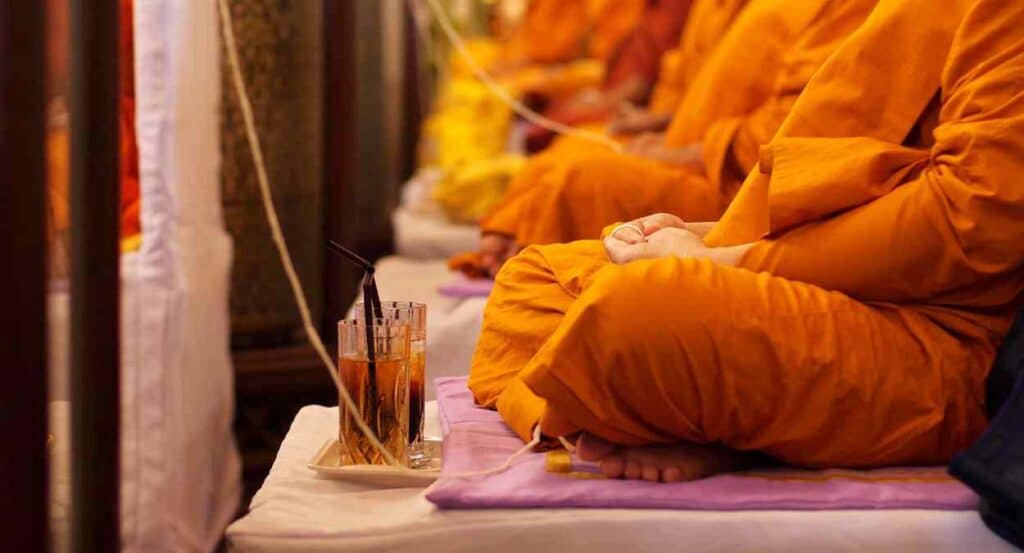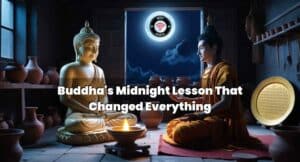
Unlock Inner Peace: The Ancient Secret of Vipassana Meditation Revealed
In today’s fast-paced world, where stress and anxiety seem to be constant companions, the search for inner peace and harmony has become more crucial than ever. Vipassana meditation, an ancient technique rediscovered by Gautam Buddha over 2,500 years ago, offers a practical solution to this universal human dilemma. This powerful method of self-observation and mental purification has gained recognition worldwide as an effective tool for achieving lasting happiness and freedom from suffering.

Understanding Vipassana Meditation : The Essence of Insight Meditation
Vipassana, which means “to see things as they really are” in the ancient Pali language, is a non-sectarian technique that aims to eradicate mental impurities and promote deep self-awareness. Unlike other forms of meditation that focus solely on breath or mantras, Vipassana delves deeper into the mind-body connection, offering practitioners a profound understanding of their own nature.

The Origins and Spread of Vipassana Meditation
The technique of Vipassana was taught by the Buddha as a universal remedy for universal ills. It spread throughout India and neighboring countries before being lost in its land of origin. Fortunately, it was preserved in its pure form in Myanmar (Burma) for over two millennia. In recent times, it has been reintroduced to India and has spread globally, thanks to the efforts of teachers like S.N. Goenka, who learned the technique from his teacher Sayagyi U Ba Khin.
The Core Principles of Vipassana
At its core, Vipassana is based on the following principles:
- Self-observation: Practitioners learn to observe their own mental and physical phenomena without reaction.
- Impermanence: Understanding that all sensations and experiences are transient.
- Non-reaction: Developing equanimity towards all experiences, whether pleasant or unpleasant.
- Purification of mind: Gradually removing mental impurities through continuous practice.

The Science Behind Vipassana Meditation
Recent scientific studies have shed light on the neurological and physiological benefits of Vipassana meditation:
- Brain plasticity: Regular practice has been shown to increase gray matter density in areas associated with learning, memory, and emotional regulation.
- Stress reduction: Vipassana techniques help lower cortisol levels, reducing stress and anxiety.
- Improved focus: Practitioners report enhanced concentration and ability to manage distractions.
- Emotional regulation: The practice fosters better control over emotional responses and reactivity.
The Vipassana Meditation Technique: A Step-by-Step Guide
While a complete understanding of Vipassana requires participation in a 10-day residential course, here’s a basic overview of the technique:
- Establishing a foundation: Begin with Anapana meditation, focusing on natural breath to develop concentration.
- Body scanning: Systematically observe sensations throughout the body without reacting to them.
- Equanimous observation: Maintain a balanced mind, regardless of the pleasant or unpleasant nature of sensations.
- Penetrating insight: Develop a deep understanding of the impermanent nature of all phenomena.

The Importance of Proper Guidance
It’s crucial to learn Vipassana from qualified teachers in a structured environment. The 10-day residential courses provide the ideal setting for beginners to immerse themselves in the technique without external distractions.
Benefits of Practicing Vipassana Meditation
Regular practice of Vipassana can lead to numerous benefits:
- Stress reduction and emotional balance
- Improved relationships and communication skills
- Enhanced self-awareness and personal growth
- Increased focus and productivity
- Better management of chronic pain and health conditions
- Deeper sense of peace and contentment

Integrating Vipassana into Daily Life
While intensive courses are essential for learning the technique, the real challenge lies in incorporating Vipassana into daily life:
- Regular practice: Aim for two one-hour sessions daily, morning and evening.
- Mindful living: Apply the principles of observation and non-reaction to everyday situations.
- Ethical conduct: Follow the five precepts of moral conduct to support meditation practice.
- Continuous learning: Attend group sittings and refresher courses to deepen understanding.
Overcoming Challenges in Vipassana Practice
Like any transformative practice, Vipassana comes with its own set of challenges:
- Physical discomfort: Sitting for long periods can be initially challenging.
- Mental resistance: The mind may rebel against the discipline required.
- Emotional upheaval: Suppressed emotions may surface during practice.
- Time commitment: Balancing practice with daily responsibilities can be difficult.

Strategies for Success
- Start with shorter meditation sessions and gradually increase duration.
- Join a local Vipassana community for support and motivation.
- Maintain a consistent practice schedule, even if it means adjusting other activities.
- Approach challenges with patience and compassion towards oneself.
The Global Impact of Vipassana Meditation
Vipassana has touched millions of lives worldwide, transcending cultural and religious boundaries:
- Prisons: Vipassana programs in correctional facilities have shown remarkable success in rehabilitation.
- Education: Schools incorporating Vipassana-based mindfulness programs report improved student behavior and academic performance.
- Corporate world: Many companies now offer Vipassana courses to employees for stress management and productivity enhancement.
- Healthcare: Vipassana is increasingly recognized as a complementary approach to managing various health conditions.
The Future of Vipassana: Spreading Peace in a Troubled World
As global challenges continue to mount, the need for inner peace and harmony becomes ever more pressing. Vipassana offers a practical, non-sectarian approach to addressing the root causes of human suffering:
- Expanding access: Efforts are underway to make Vipassana courses more widely available, especially in underserved communities.
- Scientific research: Ongoing studies continue to validate the benefits of Vipassana, encouraging wider adoption.
- Digital integration: While maintaining the essence of the traditional teaching, there’s potential for technology to support practitioners in their daily lives.

Frequently Asked Questions (FAQs)
Q. What is the main purpose of Vipassana meditation?
A. The main purpose of Vipassana meditation is to purify the mind of negative mental states and cultivate insight into the true nature of reality, leading to liberation from suffering.
Q. How long does it take to see benefits from Vipassana practice?
A. While some practitioners report immediate benefits, significant changes typically occur after completing a 10-day course and maintaining regular daily practice for several months.
Q. Is Vipassana meditation affiliated with any religion?
A. No, Vipassana is a non-sectarian technique that can be practiced by people of any faith or no faith at all. It focuses on universal truths rather than religious dogma.
Q. Can Vipassana help with specific mental health issues like depression or anxiety?
A. Many practitioners report improvements in depression, anxiety, and other mental health conditions. However, it’s important to consult with a mental health professional for serious conditions.
Q. How often should one practice Vipassana meditation?
A. For optimal results, it’s recommended to practice twice daily for one hour each session. However, any amount of regular practice can be beneficial.
Q. Are there any age restrictions for learning Vipassana?
A. While there’s no upper age limit, the standard 10-day course is typically open to adults 18 and older. There are special courses for children and teenagers.
Q. Can Vipassana be practiced alongside other meditation techniques?
A. It’s generally recommended to focus solely on Vipassana to fully understand and benefit from the technique. Mixing methods can dilute the effectiveness of the practice.

Conclusion
Vipassana meditation stands as a beacon of hope in our quest for inner peace and harmony. This ancient technique, rooted in the wisdom of the Buddha, offers a practical path to liberation from suffering.
By learning to observe our own mental and physical phenomena with equanimity, we can break free from the cycle of blind reaction that causes so much of our distress. As more people around the world discover the transformative power of Vipassana, there is hope for a more peaceful, harmonious society.
Whether you’re seeking personal growth, stress relief, or a deeper understanding of yourself and the world around you, Vipassana provides a time-tested method for achieving these goals. In a world often dominated by external pursuits, Vipassana reminds us that true happiness comes from within, accessible to all who are willing to look deeply and honestly at themselves.
Disclaimer:
This article is for informational purposes only and does not constitute medical advice. The content is based on research and personal experiences shared on Wini Media. Please consult a qualified healthcare professional before starting any new meditation practice.
Also Read :
The Truth About the Global Vipassana Pagoda’s Mesmerizing Relics
The Complete Guide to Transformational Vipassana Meditation
The Unexpected Fat Burning Power Of Ghee, How To Take Ghee For Weight Loss?
Google And NPCI Join Hands To Propel India’s UPI Worldwide : UPI Global Launch
NASA Sends Out Warning : Aircraft-Sized Asteroid Hurtles Towards Earth At Frightening Speeds.
What Does The Odometer Of An Automobile Measure? Your Car’s Odometer Reading Explained
Emotional First Glimpse: Devotees Captivated By Ram Lalla Idol Of Ayodhya Ram Mandir






























